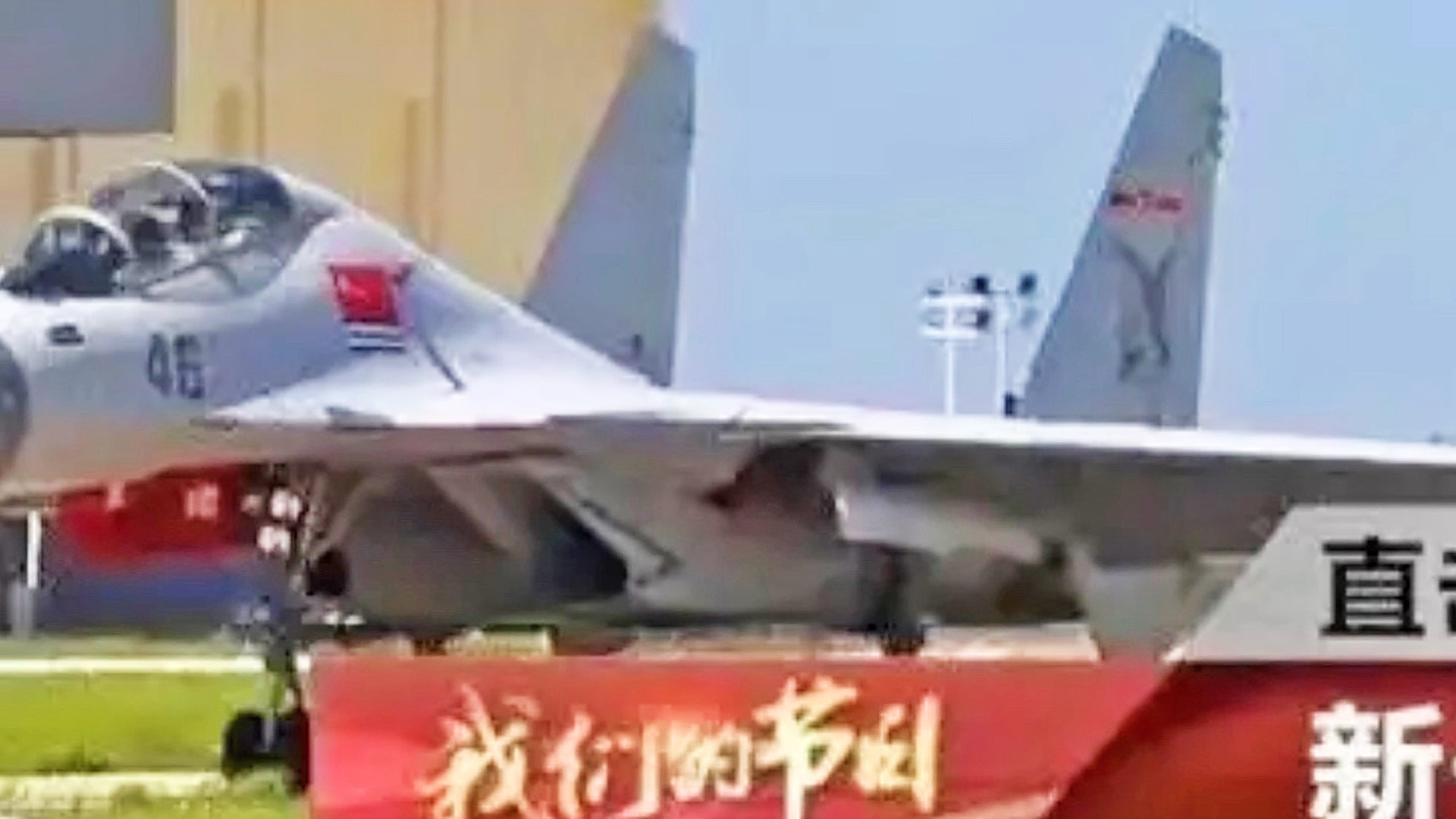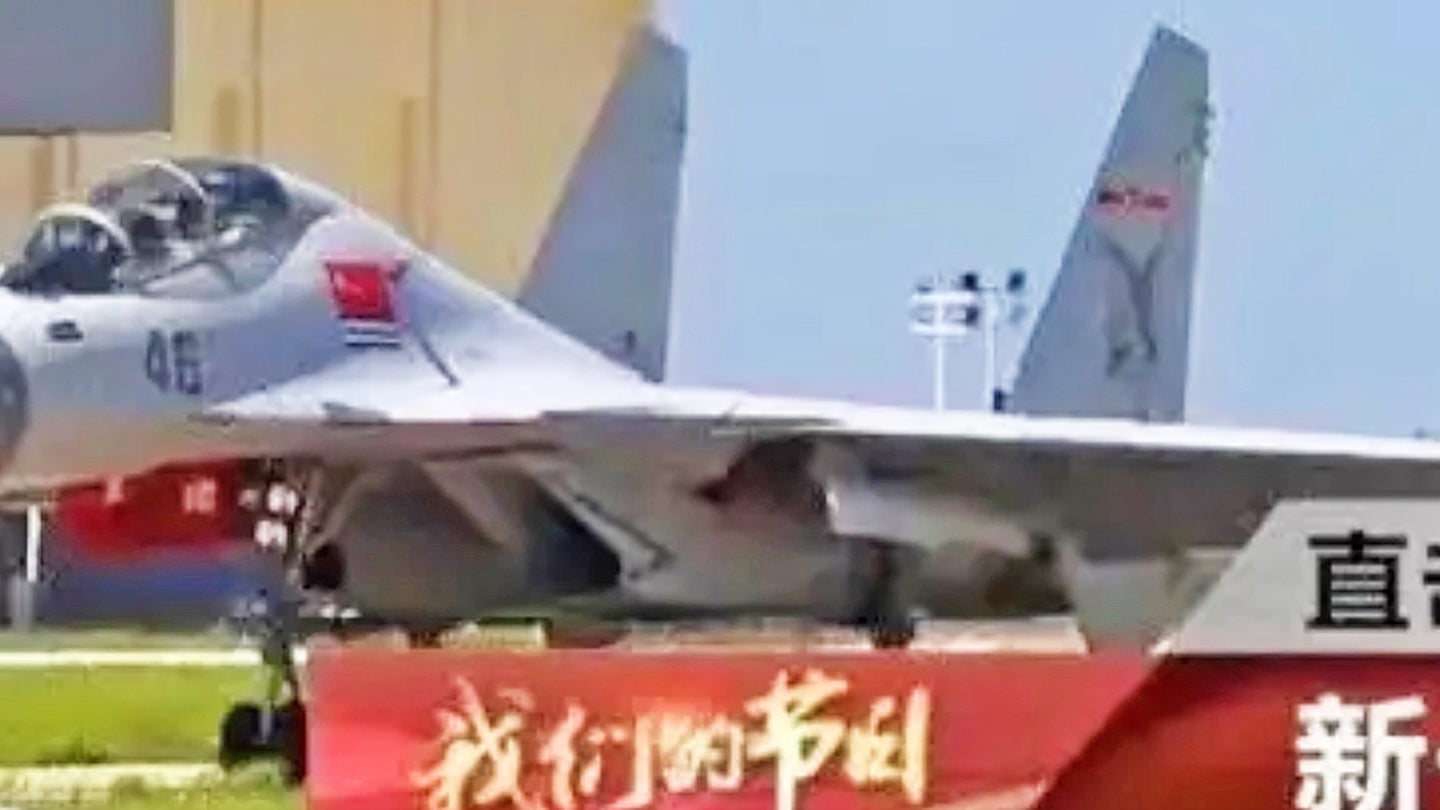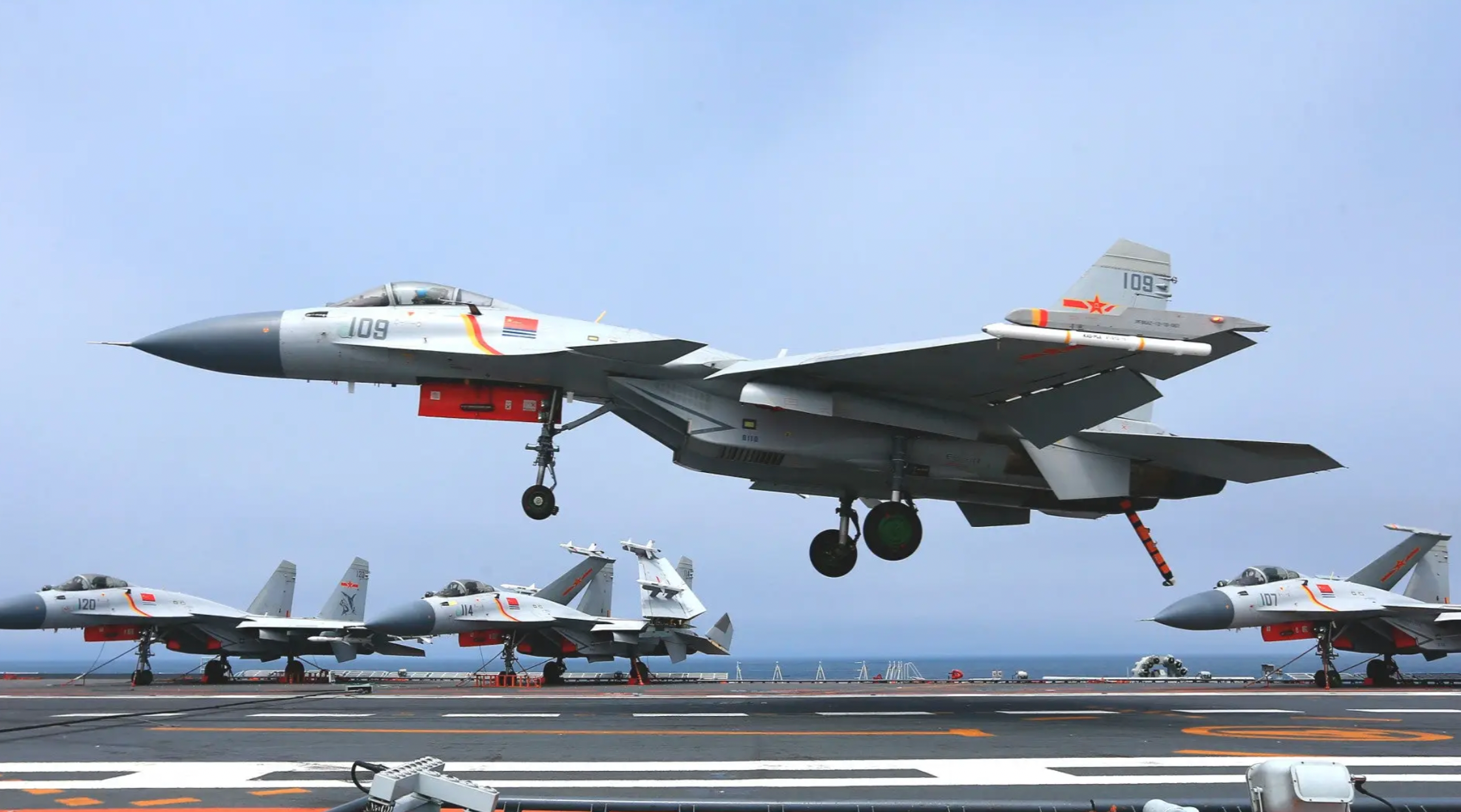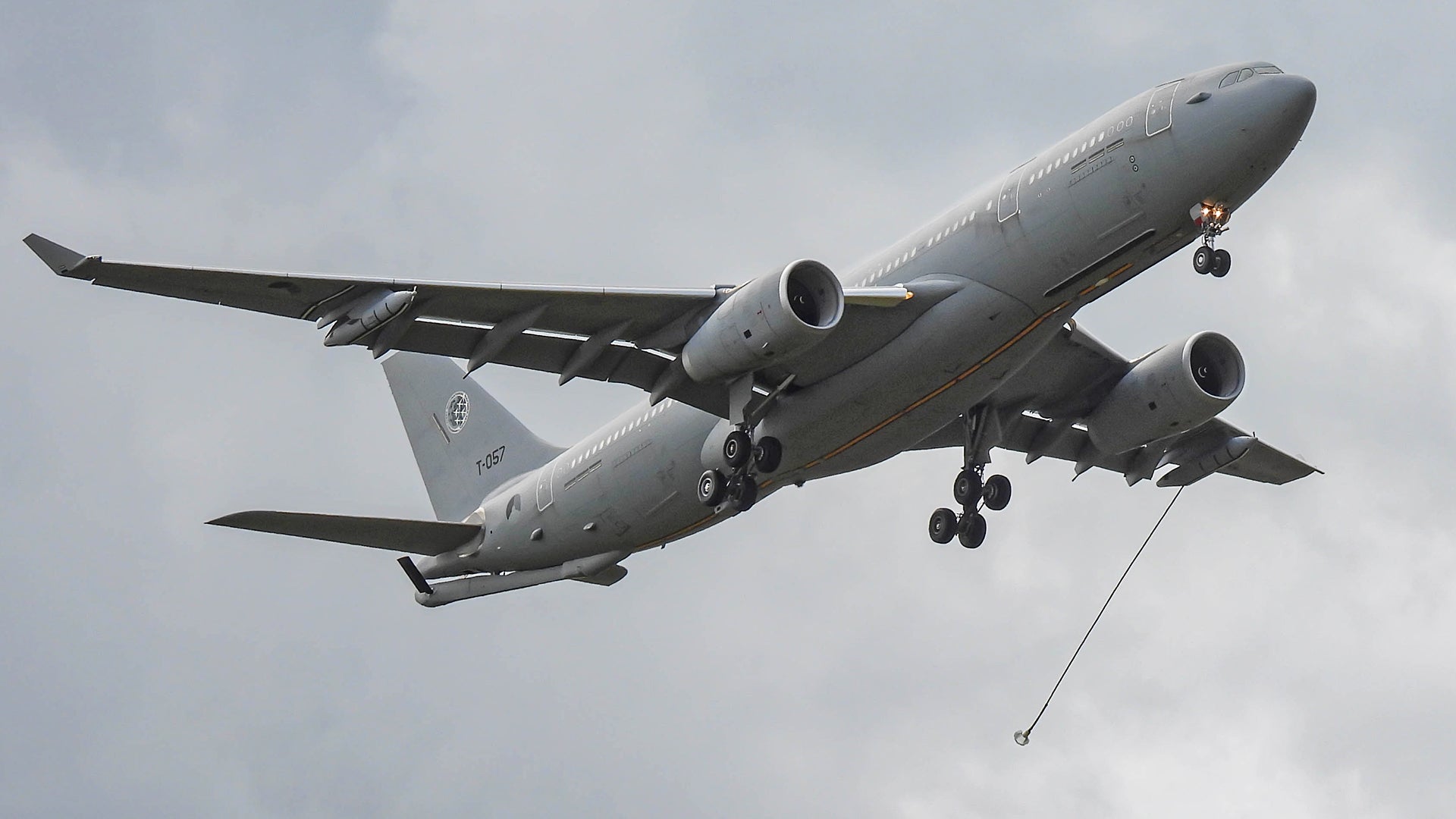Our Best Look Yet At China’s J-15S Two-Seat Carrier-Capable Fighter
Chinese TV SceencapChina continues to develop its carrier-based J-15 Flanker family, although the precise role of the J-15S remains unclear. The post Our Best Look Yet At China’s J-15S Two-Seat Carrier-Capable Fighter appeared first on The Drive.


An image that recently appeared on social media shows a series-production example of China’s enigmatic J-15S in the most detail we’ve seen so far. The ultimate objective behind the two-seat J-15S remains barely known, with conflicting reports that it is intended as a carrier trainer, a multirole strike fighter, or simply as a testbed. Meanwhile, the basic platform has already served as a springboard for a carrier-based electronic warfare (EW) jet, the J-15D.
Apparently taken from a TV news report, the latest image of an operational J-15S shows the two-seater in its PLAN colors, parked alongside a single-seat J-15 carrier fighter, which is by now well established in Chinese service.
The operational J-15S carries the code 46 on its forward fuselage and has standard PLAN markings, including the ‘Flying Shark’ logo on the tailfins, but is seen completely unarmed, without even weapons pylons fitted.
While it’s now apparently clear that the J-15S has entered PLAN service, we still don’t know exactly which role it will fulfill. First off, though, it’s important to note that, unlike the single-seat J-15, which is essentially a Chinese clone of the Su-33 Flanker-D as flown by the Russian Navy, the J-15S has no Russian or Soviet equivalent.
While Russia did develop a prototype two-seat carrier Flanker, the Su-33UB had side-by-side seating, very much like the Su-34 Fullback strike aircraft, but it never made it into service.
Instead, the J-15S has a more conventional tandem two-seat configuration. Most likely, it seems the navalized J-15 airframe was combined with the forward fuselage of the land-based J-11BS combat-capable trainer.
Interestingly, however, the J-15 airframe used is the original model that’s equipped for short take-off but arrested recovery, or STOBAR, operations. This means the J-15S is compatible with the PLAN’s first two aircraft carriers, Liaoning, and Shandong, which aren’t fitted with catapults and instead use a ‘ski jump’ takeoff ramp. The PLAN’s latest carrier, the recently launched Fujian, does have catapults and a catapult-assisted take-off but arrested recovery, or CATOBAR, version of the single-seat J-15 has been developed to operate from it and subsequent vessels.

Standard single-seat J-15s train aboard the carrier Liaoning:
As it stands, the J-15S is therefore not equipped for catapult launch but it does incorporate some other interesting features. The cockpit canopy has been changed, with an enlarged transparency that provides a better view forward for the back-seater, as is typical on two-seat Flanker variants. While this ‘stadium’-like seating would be ideal for a trainer, it is also beneficial in air combat scenarios, too.
The first J-15S prototype reportedly flew in late 2012 and seems to have been followed by a second sometime in 2014, although this timeline is unconfirmed. Regardless, these two aircraft are powered by Chinese-made WS-10 engines rather than the Russian AL-31F turbofans used on earlier Chinese Flanker versions, including the single-seat J-15s.






































